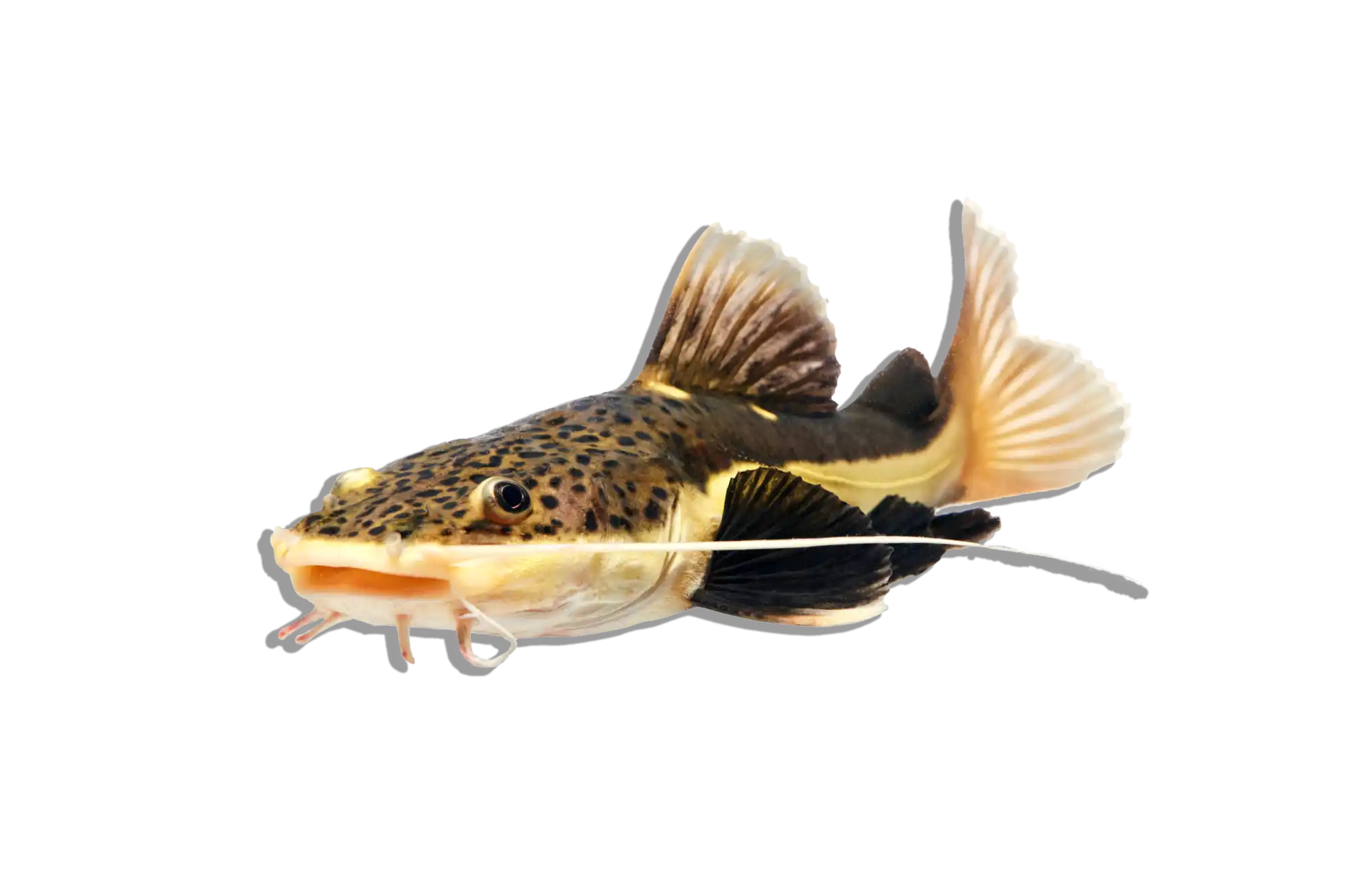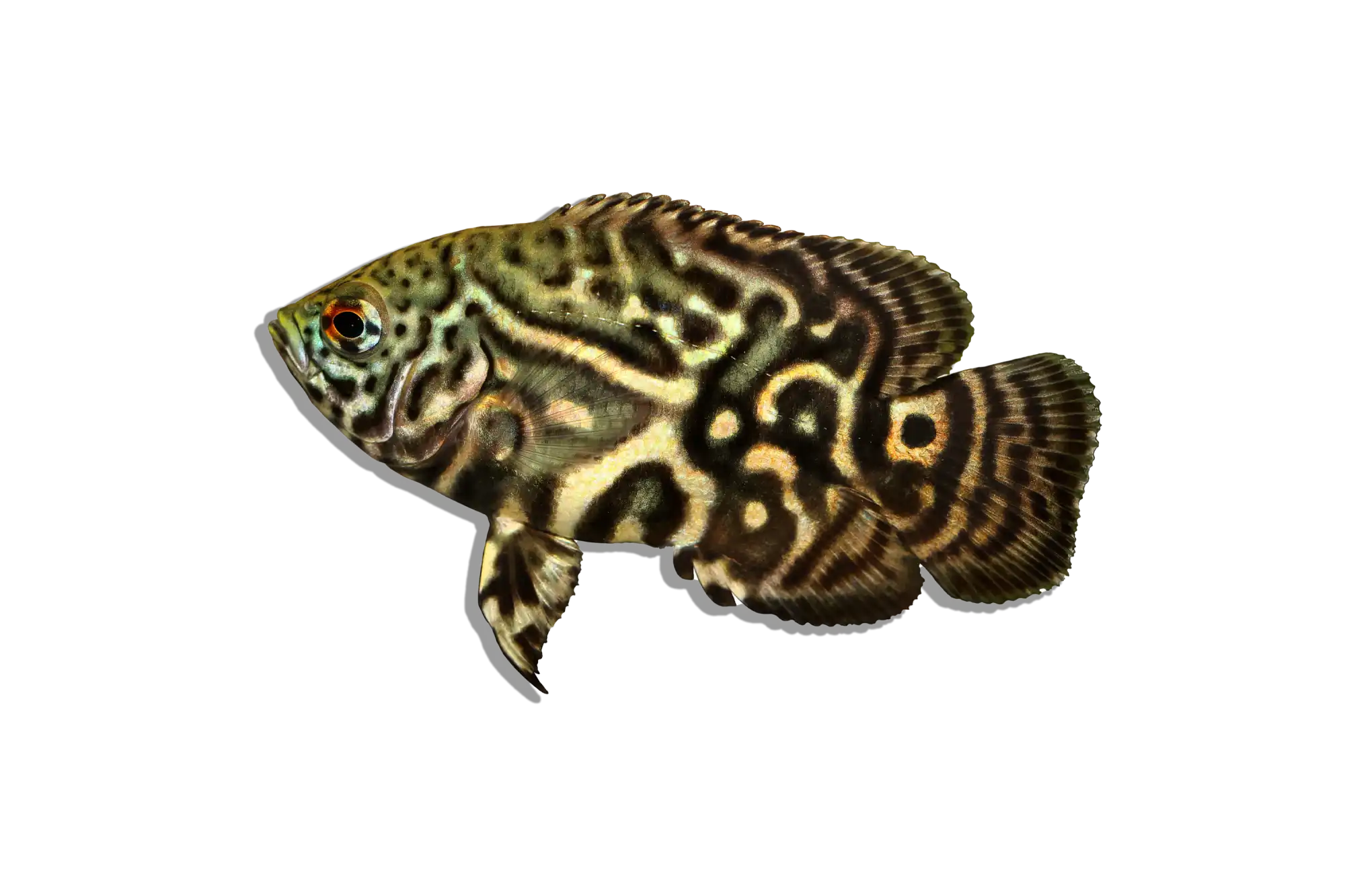Description
Common Name: Black Arowana
Scientific Name: Osteoglossum ferreirai
Other Names: Black Dragon Fish, Rio Negro Arowana
The Black Arowana is a stunning freshwater fish known for its elongated body, metallic sheen, and distinctive black coloration as a juvenile. As it matures, the coloration shifts to a silvery-grey with a slight blue hue. They have large, upward-facing mouths, indicative of their surface-feeding habits. The long, flowing pectoral and anal fins, along with the elongated dorsal fin that extends towards the tail, give the Black Arowana an elegant and dragon-like appearance. Their scales are large and reflective, adding to their visual appeal in an aquarium setting.
Habitat and Distribution: The Black Arowana originates from the Amazon Basin, specifically in the Rio Negro and Orinoco River tributaries in South America. This species thrives in slow-moving, blackwater rivers and floodplain lakes. The water in these areas is often acidic and stained with tannins from decomposing vegetation, which provides a unique environment rich in organic material. These fish are adapted to low-light conditions and can often be found near the water surface, where they hunt for insects and other small prey.
Size and Lifespan: In the wild, Black Arowanas can reach lengths of up to 3 feet (91 cm), but in captivity, they typically grow to around 2 feet (61 cm). Their lifespan can range from 10 to 15 years, with proper care and optimal conditions in an aquarium setting. Factors influencing their lifespan include diet, water quality, and tank size.
Diet and Behavior: Black Arowanas are carnivorous and primarily feed on insects, small fish, and crustaceans in the wild. In an aquarium, they can be fed a diet of high-quality protein-rich pellets, frozen bloodworms, and chopped raw tilapia. It is important to avoid saltwater foods like shrimp or krill. These fish are known for their jumping behavior, which is a natural hunting technique to catch prey above the water surface. They are generally solitary and can be territorial, especially in smaller tanks.
Breeding and Reproduction: Black Arowanas exhibit unique reproductive behaviors, including mouthbrooding. During courtship, males and females engage in a series of circling and nipping behaviors. After spawning, the male carries the fertilized eggs in his mouth to protect them from predators. In captivity, breeding Black Arowanas is challenging due to their size and specific environmental needs. Successful breeding often occurs in large, specialized breeding tanks with controlled conditions.
Aquarium Care and Tank Requirements: To keep a Black Arowana, a large aquarium of at least 250 gallons is recommended to accommodate their size and active swimming behavior. The tank should have a tight-fitting lid to prevent them from jumping out. Lighting should mimic their natural environment, with subdued light and plenty of hiding spots created with driftwood and plants. Water flow should be moderate, and regular maintenance is necessary to keep water parameters stable.
Ideal Tank Mates: Black Arowanas can be kept with other large, non-aggressive fish species. Suitable tank mates include large catfish, pacu, and bichirs. It is generally not advisable to keep them with smaller fish, as they may be seen as prey. Black Arowanas can be kept with their own kind, but adequate space and monitoring are required to prevent territorial disputes.
Difficulty Level: Intermediate to Advanced. Black Arowanas require specific care and a large tank, making them more suitable for experienced aquarists.
Water Parameters:
- Temperature: 75-82°F (24-28°C)
- pH: 6.0-7.0
- General Hardness (GH): 3-10 dGH
- Carbonate Hardness (KH): 1-5 dKH
- Ammonia: 0 ppm (ideal), up to 0.25 ppm (max)
- Nitrite: 0 ppm (ideal), up to 0.25 ppm (max)
- Nitrate: <20 ppm (ideal), up to 40 ppm (max)
Additional Information:
- The Black Arowana's jumping behavior is a key survival tactic in the wild, allowing them to catch insects and small animals from overhanging branches.
- They are considered a symbol of good luck and prosperity in some cultures.
- Conservation status is currently not of concern, but habitat destruction in the Amazon Basin could impact their populations in the future.
- Black Arowanas are known for their resilience and adaptability to different environments, making them fascinating subjects for aquarists interested in South American fish species.




















